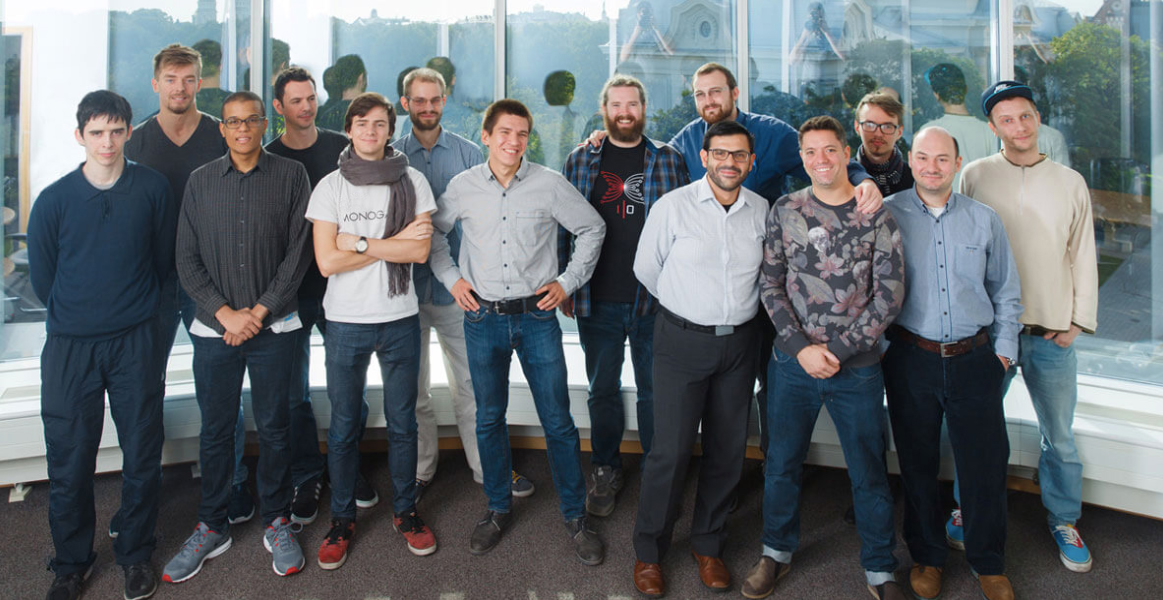
By his own admission, Charles Hoskinson is a man in a hurry. The cryptocurrency entrepreneur has filled recent months dashing between the United States and Africa, meeting the great and the good at Davos and overseeing IOHK, the research and development company he co-founded and from which he launched Cardano, the open-source, decentralised public blockchain and cryptocurrency.
Hoskinson’s story in the crypto space is well documented, but worth briefly revisiting. One of the co-founders of Etherum, he left after disagreements before regrouping with former Ethereum colleague Jeremy Wood to establish IOHK, which builds and develops cryptocurrencies and blockchains for corporations, government entities and academic institutions.
Central to IOHK is Cardano, home to the Ada cryptocurrency. Cardano can be used to send and receive digital funds, but is also capable of running financial applications currently used every day by individuals, organisations and governments all around the world. Hoskinson says his team has been writing scripts for Cardano since 2017, resulting in a number of launches this year that he says will address some of the weaknesses he sees with cryptocurrencies.
The next launch, known as Shelley, will make Cardano fully decentralised, allowing owners of Ada to help power the network and process transactions in return for rewards.
“We believe the system will be somewhere from 50-100 times more decentralised by validators than Bitcoin and Ethereum,” Hoskinson tells Digital Bulletin. “The system gets more performant over time as it becomes more decentralised, so that is a sustainable model as we go from millions of users to billions of users. It also gives users a guarantee that we’re always going to be resilient.”

After Shelley will come Goguen and the promise of smart contract capabilities, and then Basho, which will introduce the scalability necessary to maintain a truly global system. Finally, Voltaire will be rolled out, aimed squarely at delivering the operability and scalability that Hoskinson says cryptocurrencies desperately need.
“These systems are not interoperable, so we need our WiFi moment. We currently have around 3,000 cryptocurrencies and they don’t talk to each other and that’s just in our industry. You then have legacy payment systems like Visa and Mastercard, as well as legacy banking systems.
“It is not reasonable to say, screw the old stuff, we’re going to throw it all away even if it has trillions of dollars in it. You have to be able to talk to it and work with it in a graceful way. Finally, every time we have a dispute in the cryptocurrency space, we seem to end up with a Bitcoin cash or an Ethereum Classic or Bitcoin SV.
“Disagreements ending in community splits and product forks is not a sustainable model, you need a way to resolve disputes and grow your ecosystem. You need sustainability, interoperability and scalability and we’ve bundled these three things together and we see that as the third generation.”
The aim is to introduce all of the releases before the end of 2020, although it is hard to imagine how that will not be impacted by the current climate. But either way, Hoskinson says the roadmap for 2020 is a culmination of years of hard work that will make Cardano stand out in a crowded market.
“We are chipping away at this generation by generation and we think we’ll get most if not all of it done by the end of 2020 because we have a great code base,” he comments. “That will give us a global and sustainable system capable of meeting the needs of millions of users and paying for itself and evolving itself. It’s a really exciting project and the result of five years of engineering and research.
“Once we ship these elements, we can start working on the next five years to make Cardano even better. But what we can ship just this year will be better than anybody else in the market.”
It is a market that Hoskinson himself admits is somewhat dictated – in public consciousness at least – by Bitcoin, a legacy of its dramatic spike and subsequent fall in value in 2017 and 2018. But there is a confidence that other platforms can step out from Bitcoin’s shadow.
“Bitcoin is still the market leader and drags the industry along and for the cryptocurrency model to be successful, it has to stick around a while longer. Over time, we foresee a gradual decoupling, and we first saw that with Ethereum which began to move counter cyclical to Bitcoin.
“There’s real industry confidence that in three or five years we could see a decoupling of the major projects so that Bitcoin is one component, but it is not going to be a pricing mechanism for infrastructure.”
What has really disturbed me about my industry is that some of my competitors have made statements about the performance of their systems, the scale and the capability of their systems with no evidence at all, no scientific evidence, no scale, no benchmarking, no prototyping
One thing that comes through clearly when talking to Hoskinson is how important he believes it is to simplify the experience for consumers if cryptocurrency is to become the mainstream hit it has the potential to be.
IOHK recently announced a partnership with sneaker manufacturer New Balance with the stated goal to utilise the Cardano blockchain to ensure that New Balance shoes are authentic. Hoskinson says the launch was a perfect example of how consumers should be using these platforms and technologies.
“The users of that system had no clue that they were using a cryptocurrency or a blockchain, they just had a card and a shoe. I attended the launch event and saw the buyers pulling the card out of the box and tapping it on their phone to authenticate the shoe, and that is the point of what we’re building.
“If we really care about these things having billions of users, we shouldn’t force the user to understand how private keys work, how crypto works or how blockchain work, we should just be talking about problems that they want to solve.
“The technology has to fade to the backdrop, we cannot be successful if we expect users to understand all the intricacies. What you have to have is consumer experiences which focus mostly on the problem that you want to solve. That was a great experience to see those sneakerheads authenticate their shoes using a product based on a cryptocurrency, that was a great moment.”
But while progress is being made, Hoskinson says there are individuals and companies that threaten to halt that journey, consigning cryptocurrencies as a whole to the periphery of society rather than to its centre.
“What has really disturbed me about my industry is that some of my competitors have made statements about the performance of their systems, the scale and the capability of their systems with no evidence at all, no scientific evidence, no scale, no benchmarking, no prototyping.
“They are making these statements to appreciate the value of their token at the expense of retail investors and at the expense of the credibility of our industry as a whole. For every Ethereum and Bitcoin that we have, we have a Bitconnect [a scheme that abruptly shut down after taking $2.5bn from investors] or a OneCoin [a notorious cryptocurrency scam].
“We are not going to be successful in convincing governments of Fortune 500 companies in the developing world to adopt our technology if all of our industry is perceived to be just about making money as quickly as possible from whoever possible, which in many cases is the most vulnerable people. So I am a very outspoken critic and I won’t apologise for it, because I think there are higher pursuits of value for our industry.”
Hoskinson’s fire, he says, comes from wanting to drive up standards that will stand the test of time, and despite having considerable frustrations and considerable wealth, he is clearly as passionate about what he does now as when he started out, probably more so.
“I’m the luckiest man in the world; I’ve been to 52 countries, I’ve met heads of state, I just had dinner with the PM of Georgia in Zurich, I’ve been interviewed by Larry King and it is absolutely amazing and surreal,” he concludes.
“I feel a lot of responsibility on my shoulders that my movement is probably going to decide how private rights, data rights and other key things for the 21st century are going to work for the world. And when these standards are set they are going to exist for 50 or 60 years. So if I’m tired one day, I have to keep going as I have a job to do and I will do so until the market tells me to stop.
“I’ve got decades of work to do and I’m going to be here fighting hard for as long as I can.”



